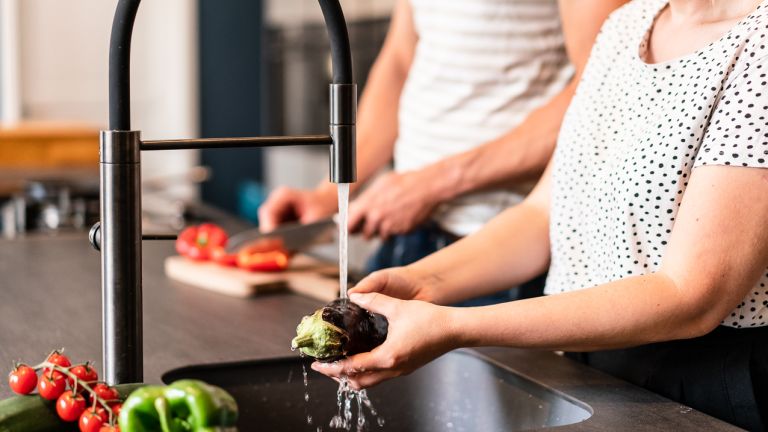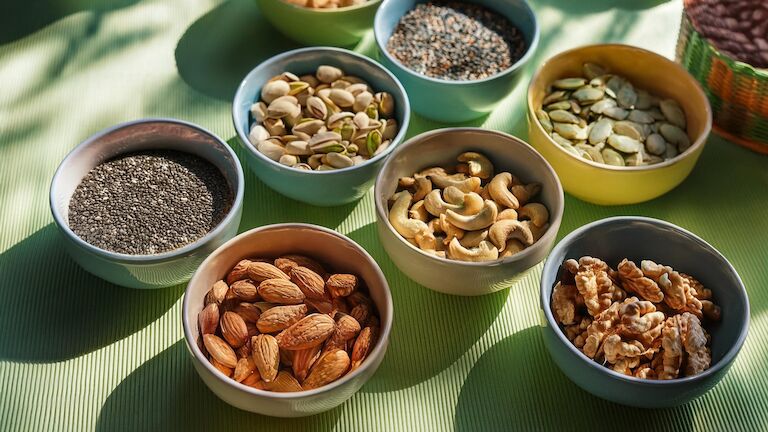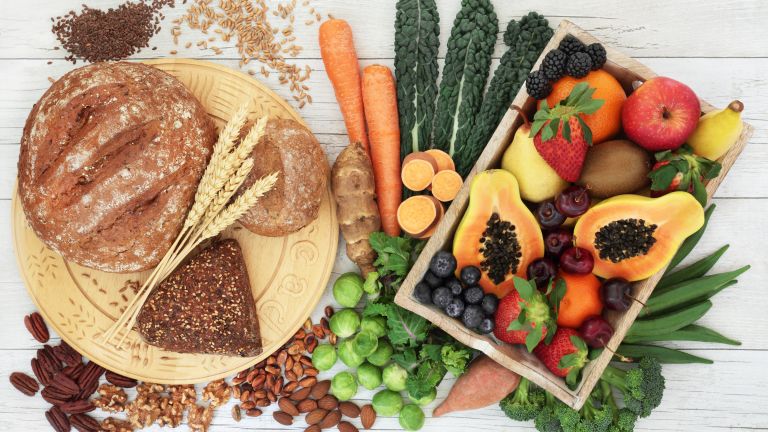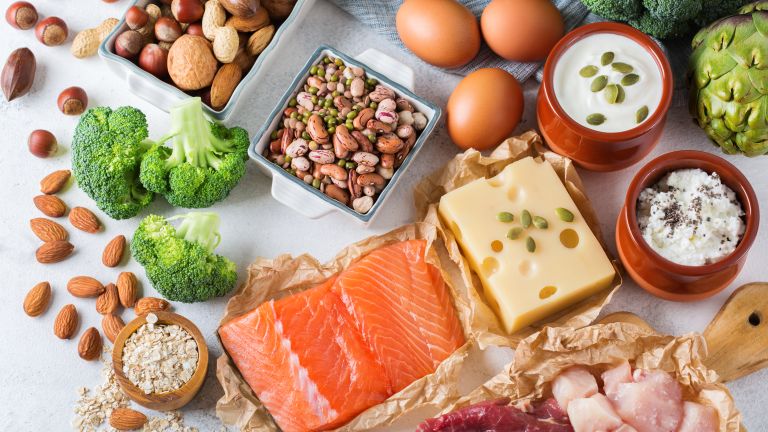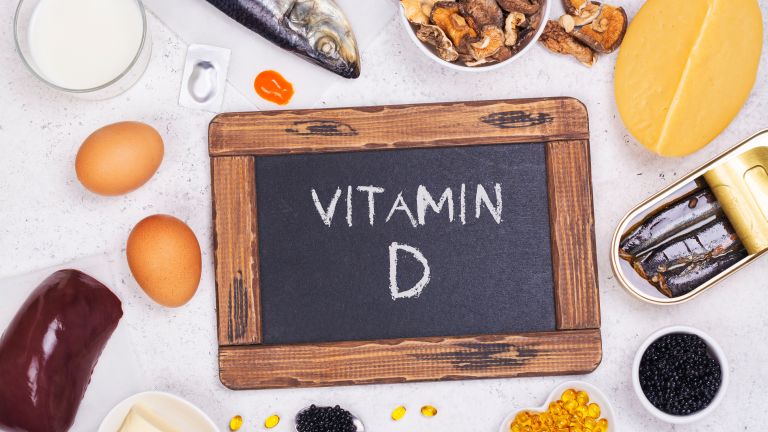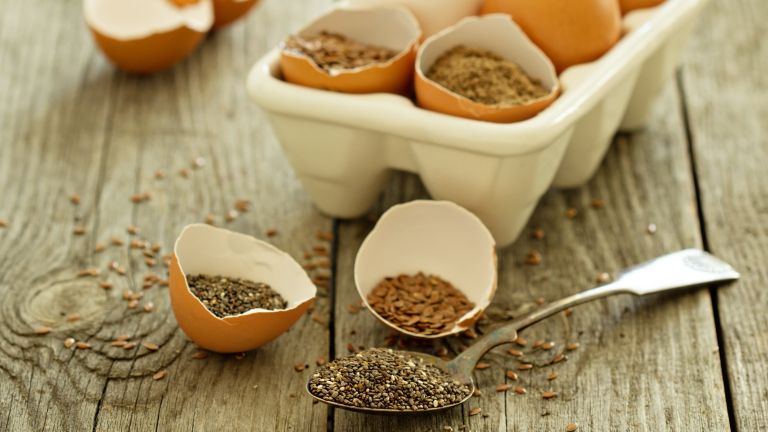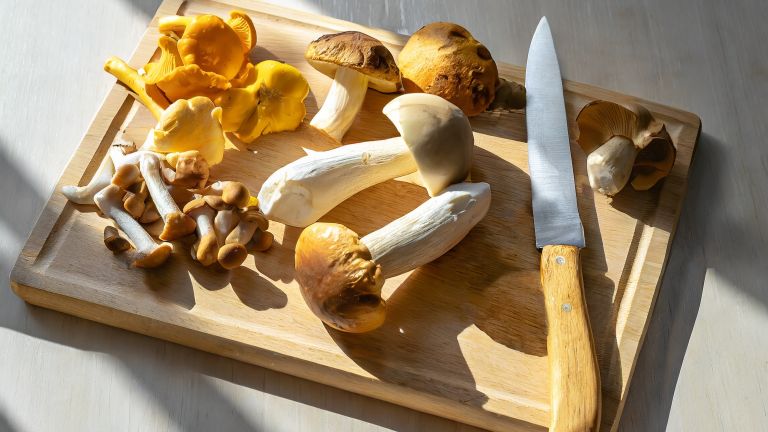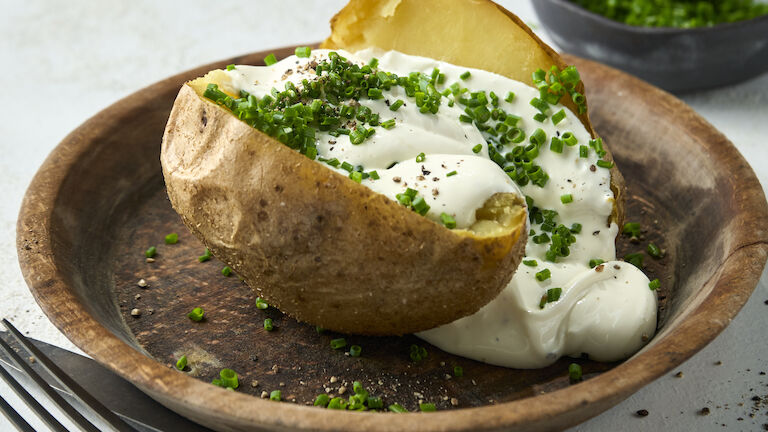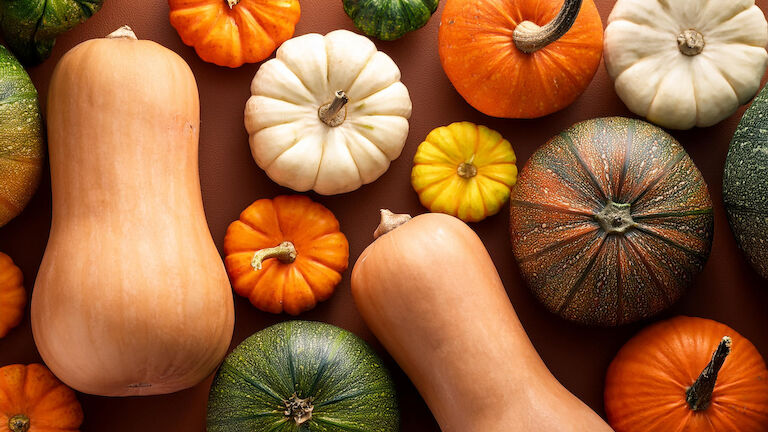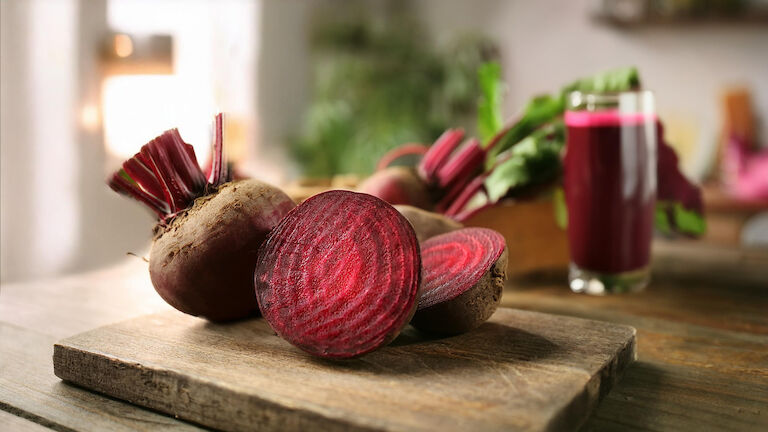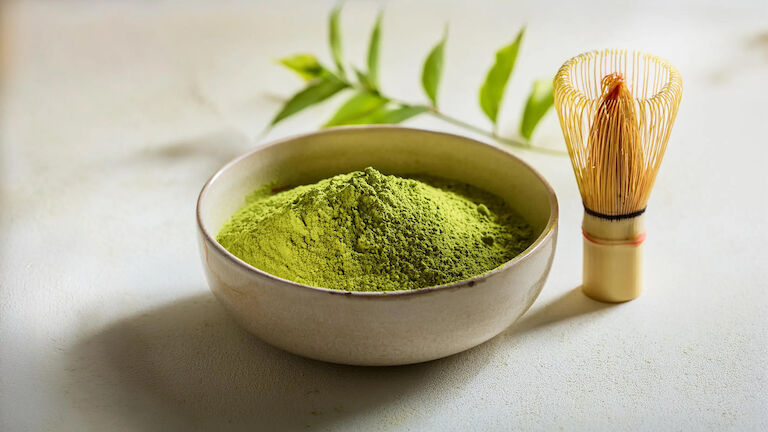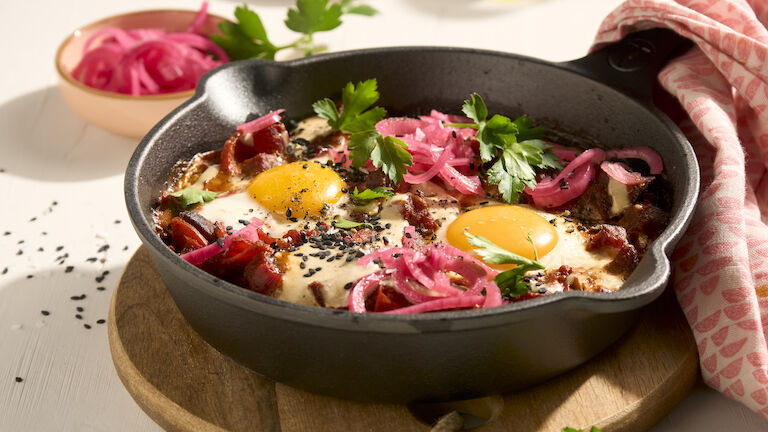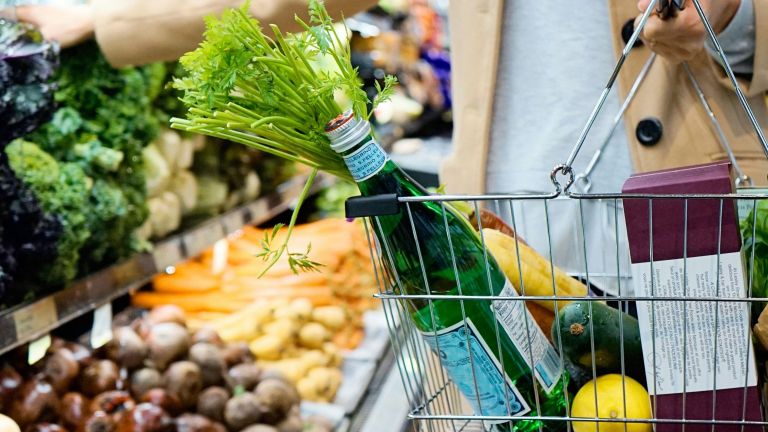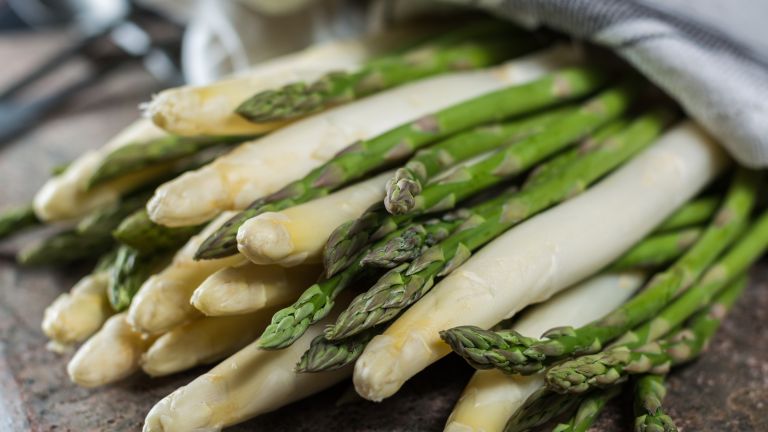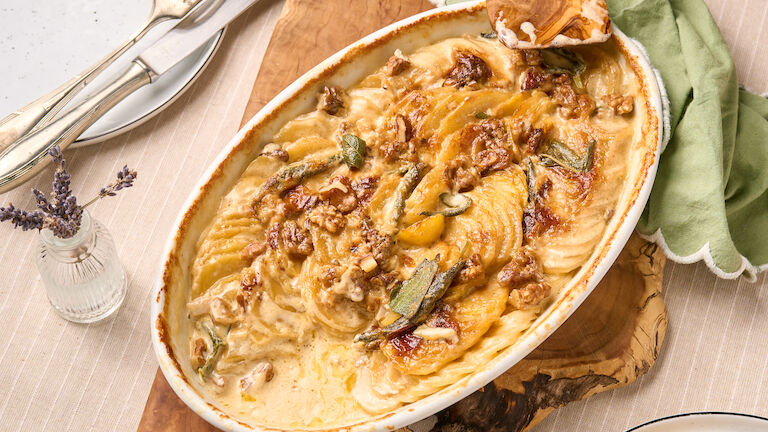Healthy everyday fish dishes
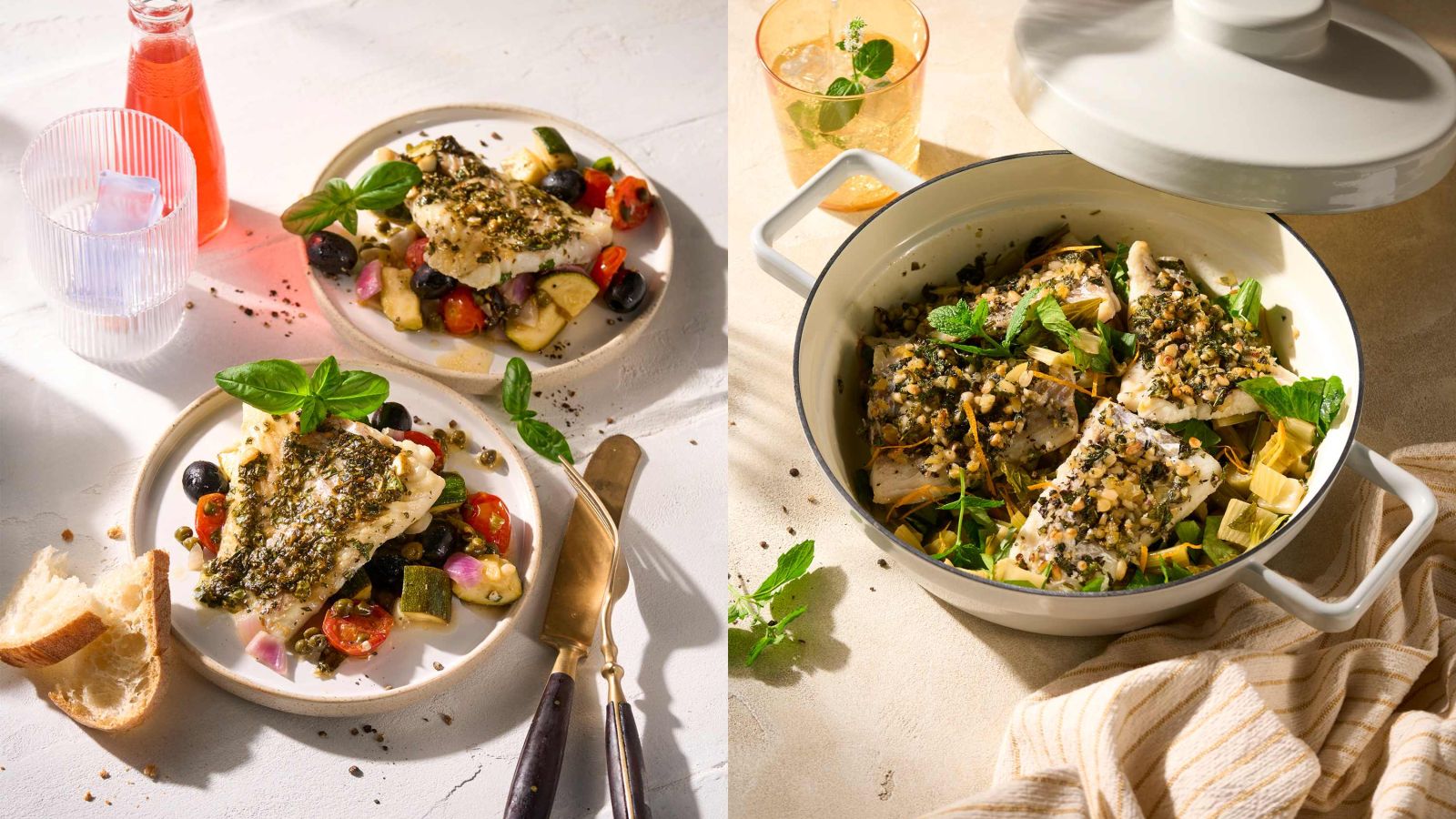
With its many nutrients, fish is a valuable source of food that can be served in a flash thanks to our oven-baked fish recipes. This article reveals why including fish in your diet is certainly worthwhile, which varieties are to be recommended, and what to look out for when buying fish.
In brief:
- There’s so much goodness in fish!
- What to look out for when buying fish
- Types of fish to include on your shopping list
- Why oven-baked fish is an ideal everyday meal
If you’re fishing for healthy proteins and essential fatty acids, our oven-baked fish recipes are the perfect catch. These simple dishes make it easy to incorporate fish, as one of the most valuable food sources, into your meal plan. What’s more, the German Nutrition Society (DGE) recommends eating fish once or twice a week.
Our recipe highlights with oven-baked fish:
- Oven-baked salmon with fennel & celery >>
- Oven-baked cod fillets with carrots & mangetout >>
- Oven-backed pollock fillets with courgettes & black olives >>
Tip: Fresh fish is best eaten on the day of purchase. Frozen fish is also a good idea, though it should be used up after thawing and not be refrozen.
There’s so much goodness in fish!
While cod, pollock, hake, plaice and redfish are low in fat, coldwater fish such as salmon, mackerel and tuna have a fat content of more than 10 percent and are rich in omega-3 fatty acids.
The high proportion of valuable fatty acids, easily digestible protein, selenium and essential vitamins (including vitamin D!) makes freshwater and above all saltwater fish an important source of nutrients. Good reasons, therefore, for the DGE to recommend that adults eat one or two fish meals per week – preferably 70 g of oily fish such as salmon, mackerel or herring, which also provide us with iodine for boosting the metabolism.
Saltwater species are also very special given that they are rich in long-chain omega-3 fatty acids. A comprehensive literature review by the DGE, in which it examined more than 50 studies into fish consumption and its influence on nutritional diseases, confirmed that eating fish regularly can reduce the risk of cardiovascular diseases. It can also prevent ischaemic stroke and lipid metabolism disorders.
The long-chain fatty acids from saltwater fish, especially DHA (docosahexaenoic acid) and EPA (eicosapentaenoic acid), are not only important to brain development, but also influence the flow properties of the blood and muscle function as well as inflammatory and immune reactions. Since these research results confirm that oily fish is one of the healthiest foods available, it is crucial that we take a responsible approach to handling and purchasing fish.
What to look out for when buying fish
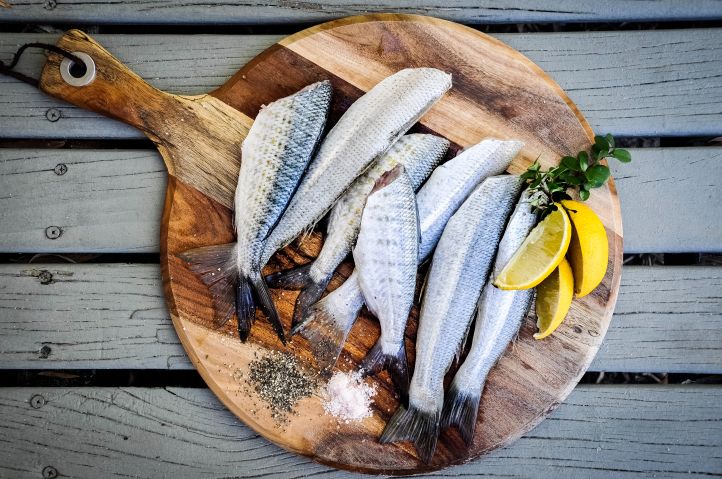
The health benefits of fish are clear. But apart from personal preferences, what should we consider when shopping for fish? To protect marine biodiversity and prevent overfishing of wild fish and seafood, the WWF, for example, suggests that we regard fish as a delicacy and pay attention to certain labels when choosing the fish we buy.
The fish guide of the international nature and environmental organisations aims to promote sustainable fishing with binding quotas and environmentally friendly fishing methods and recommends when buying fish that we check where it is from and how it was caught. Regional fish can be advantageous, but even local species such as cod from the North Sea and Baltic Sea can be at risk of overfishing. It is therefore worth looking closely and paying attention to the following organic and environmental labels.
ASC (Aquaculture Stewardship Council) focuses on aquaculture farming and awards its label to trout, shrimp, pangasius and 15 other species of fish. The use of genetically modified feed is rejected.
MSC (Marine Stewardship Council) is an independent label for wild fish established by the WWF and Unilever which aims to effectively prevent overfishing.
Naturland Aquaculture is a label awarded in accordance with strict organic aquaculture guidelines to numerous cultivated species such as trout from Germany, salmon and mussels from Ireland, and prawns from Indonesia.
Naturland Wild Fish certification is awarded to pollock from Germany and tuna from the Azores, for example, as a means of preserving and protecting fish stocks and ecosystems.
Bioland completely rejects wild fishing and awards its label exclusively to farmed fish. Only carp has been certified by this strict organic farming association.
EU Biosiegel has developed an EU-wide guideline for organic aquaculture with a view to biodiversity conservation.
Tip: If we want to buy fish sustainably, we must pay attention to how the fish are caught. Among the more sustainable (industrial) methods are fishing with purse seine nets, pelagic trawls, rod and line (angling), trolling or short lines.
Choosing fish wisely
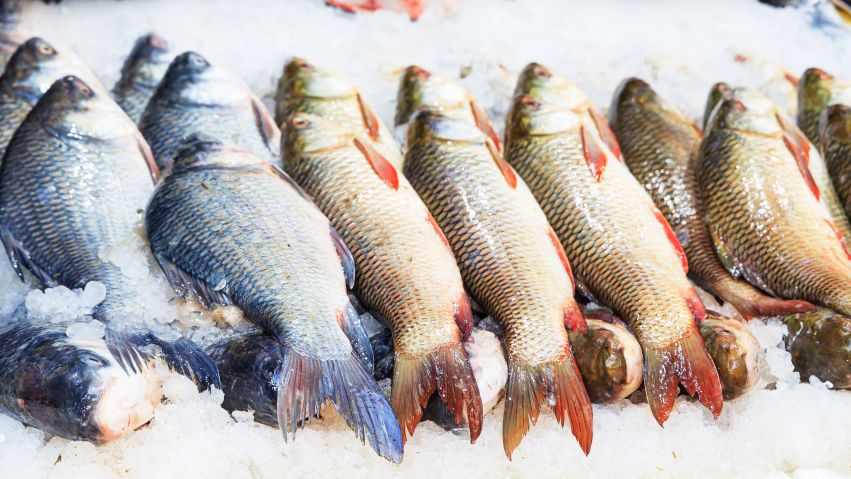
According to statistics from the Fish Information Centre (FIZ) in Hamburg, the per capita consumption of fish and seafood in Germany rose to 13.7 kg in 2022 – a trend that does not appear to be waning. Alaska pollock, salmon and tuna are most popular with Germans, but what perhaps could be serve as an alternative?
Alaska pollock
The Alaska pollock is a marine fish species belonging to the cod family. There are several reasons why it is the best-selling fish in Germany: As one of the cheapest varieties available at the fish counter, it is often sold in the form of fish fingers and its light, firm flesh makes it particularly easy to fry or steam.
Shopping tip: According to the WWF, it is better to avoid Alaska pollock from the Western Bering Sea and generally any fish caught by bottom trawling.
Farmed & wild salmon
Roasted, pickled, grilled or even raw, the firm, pink flesh of salmon can be prepared in numerous ways and is particularly popular in Germany. And that’s a good thing, as salmon contains quite an impressive amount of vitamin D. It may not completely cover the daily requirement for keeping bones strong and teeth healthy, for example, but certainly offers optimal support. In addition, this oily fish contains valuable protein and substantial quantities of anti-inflammatory omega-3 fatty acids.
Shopping tip: Instead of farmed salmon from aquaculture, choose sustainably sourced wild salmon and farmed salmon certified organic.
Tuna
This fish species has not made its international culinary career from sushi creations and pizza toppings alone. With its rich red flesh, tuna is also a popular protein kick in the form of a heavily seared steak.
Shopping tip: Unfortunately, tuna is considered as rather overfished and therefore – if purchased at all – should carry the MSC label. Also look out for more sustainable types of tuna caught using “purse seines without fish aggregation devices (FAD)” or “pole and line caught”.
Cod
With its delicate, aromatic flesh, cod is an easily digestible, low-fat fish which is often sold and served as stockfish in southern Europe. To stop it becoming too dry when cooking, it is best baked gently in the oven.
Shopping tip: Because stocks of cod are under threat in some fishing areas, it is important to check where and how the fish was caught. In its Fish Guide 2022, Hamburg Consumer Organisation recommends only wild-caught cod from the North-East Atlantic (Barents Sea, Norwegian Sea, Spitzbergen and Bear Island) and North-East Pacific (Eastern Bering Sea).
Zander (pike-perch)
This low-fat freshwater fish, which has delicate flesh and few bones, generally takes little time to cook. If you want to fry it with the skin on, slash the skin first with a knife to stop it curling up or bursting and it will turn out beautifully crispy.
Shopping tip: Because zander is considered overfished in many of its original waters, the WWF recommends sustainably farmed zander from closed aquaculture.
Redfish
The firm, pale pink flesh of the redfish is in a class of its own. It is a deepwater fish found in the North Atlantic which only grows slowly and is therefore classified as endangered.
Shopping tip: According to Hamburg Consumer Organisation, only redfish from specific fishing areas of the Northwest and Northeast Atlantic (FAO 21 and 27) and from sustainably fished sources can be recommended. Labels such as that of the MSC offer guidance in this respect.
Why oven-baked fish is the ideal option
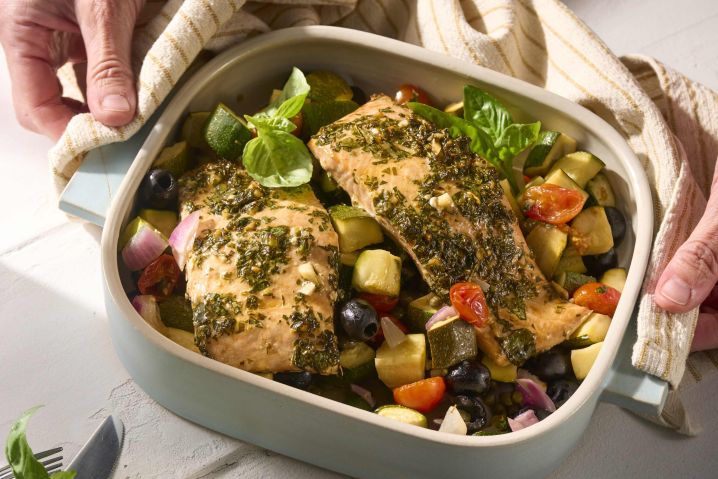
Fish dishes take a long time to prepare and require good cooking skills, and you still end up with bones on your plate? Not here! At foodfittery, our oven-baked fish recipes mean that a healthy variety of essential nutrients is easily served without too much time or effort. Chop up your favourite vegetables, mix a simple marinade, and let the oven deal with cooking the virtually bone-free fish fillets. Preparing a light lunch or dinner in this way could hardly be less stressful.
Incidentally, all our oven-baked fish recipes work just as well with frozen fish. Whether salmon or cod, simply let it thaw before use. To preserve their valuable nutrients, fish are generally frozen on the fishing vessel at -40°C immediately after being caught. Using frozen fish makes it even easier and less stressful to include the recommended, regular dose of fish in your weekly meal plan.
Tip: To speed up the thawing process, the frozen fish can also be placed in a water bath: Submerge the vacuum-packed fish completely in a bowl of cold (!) water, weighing it down with a plate if necessary. The fish should defrost in about 30 to 60 minutes.
----------
Sources:
DGE: “Fish Consumption and Prevention of Selected Nutritional Diseases”
Fish Information Centre: “The Fishing Industry. Facts and Figures 2022”
Fish Information Centre: “Encyclopedia of Fish and Seafood”
WWF Fish Guide: “Fresh fish? Yes, but sustainable!”
Consumer Organisation Hamburg: “Fish Guide 2022”
FAO (UN Food and Agriculture Organization) Fisheries Report
Images: © Unsplash.com/ Jeremy Stewart, Unsplash.com/ Tapan Kumar Choudhury, Robert Bosch Hausgeräte GmbH



